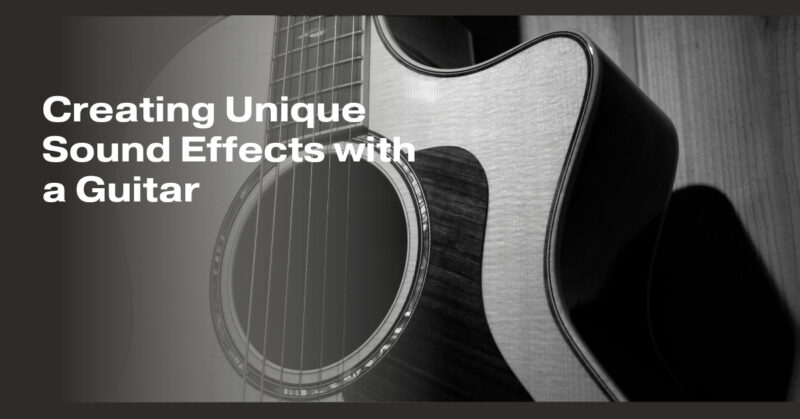Creating unique sound effects with a guitar is a creative and exciting way to expand your musical repertoire. Guitarists have experimented with various techniques and tools to produce innovative sounds, textures, and effects. Here are some techniques and ideas to help you explore and create unique soundscapes with your guitar:
1. Slide Guitar:
- Using a glass or metal slide on your fretting hand, slide it up and down the strings while picking or strumming with your other hand. This creates a smooth and fluid sound reminiscent of the blues.
2. Whammy Bar (Tremolo Arm):
- Most electric guitars come equipped with a whammy bar, also known as a tremolo arm. Experiment with gentle vibrato, dive bombs, and exaggerated pitch bends to produce a range of expressive effects.
3. Harmonics:
- By lightly touching the strings at specific nodes (often over the 5th, 7th, and 12th frets) while picking or plucking, you can produce bell-like harmonics. Explore different frets and string combinations for unique harmonic tones.
4. Feedback and Sustain:
- Create feedback by positioning your guitar near an amplifier and manipulating the distance and angle between the guitar and the speaker. Sustain can be enhanced using compression pedals and techniques like volume swells.
5. Percussive Techniques:
- Incorporate percussive elements by tapping the guitar body, slapping the strings, or knocking on the instrument. These techniques can add rhythm and texture to your playing.
6. Prepared Guitar:
- Experiment with prepared guitar techniques, such as placing objects (e.g., screws, paper clips, or credit cards) between the strings to alter the timbre and create unique percussive sounds.
7. E-Bow:
- An E-Bow is a handheld device that creates infinite sustain and unique harmonic overtones by exciting the strings with an electromagnetic field. It can be used to mimic the sound of bowed instruments.
8. Effects Pedals:
- Utilize effects pedals to manipulate your guitar’s sound. Popular effects include delay, reverb, wah-wah, flanger, and distortion. Experiment with different pedal combinations to achieve a wide range of sonic textures.
9. Alternative Tunings:
- Explore alternative tunings to create unconventional chord voicings and textures. DADGAD, open G, and drop D are just a few examples of alternative tunings that can inspire fresh sounds.
10. Looping:
- Looping pedals allow you to record and layer your guitar playing in real-time. This can create intricate and complex soundscapes by stacking various guitar parts.
11. Bowing and Scratching:
- Experiment with bowing your guitar strings with a violin bow or using a piece of sandpaper to create abrasive, textural sounds.
12. Guitar Synthesis:
- Consider using guitar synthesizers or MIDI controllers to trigger synthesized sounds and explore a broader sonic palette.
13. Prepared Amplification:
- Experiment with feedback loops and prepared amplification by placing microphones inside or near your guitar and manipulating the signal through pedals and effects.
14. Environmental Sounds:
- Incorporate ambient sounds and field recordings into your playing by using contact microphones or recording outdoors. Blend these sounds with your guitar to create unique atmospheres.
Remember that creating unique sound effects with a guitar is a journey of experimentation and creativity. There are no strict rules, so let your imagination run wild and discover your own signature sounds. The process of exploring these techniques can be as rewarding as the final result, and it may lead to the development of your distinct musical style.


